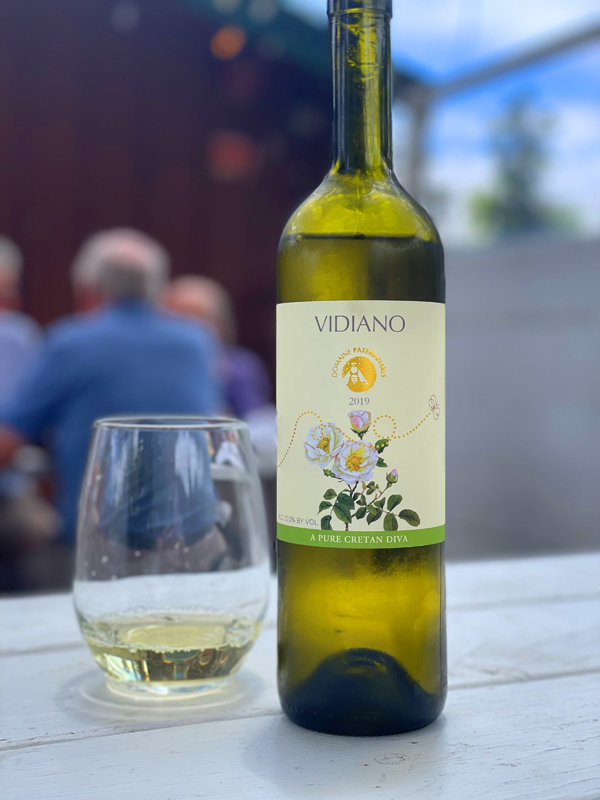2019 Domaine Paterianakis, Vidiano, Protected Geographical Indication, White Wine, Island of Crete, Greece.
Brand new to me and delicious, Domaine Paterianakis from the Greek Island of Crete makes this crisp and dry white wine that shows off steely white peach, racy citrus and melon fruits along with a round mineral driven lighter body with delicate white flowers and snappy herbs. Big thank you to Parker Fisher, the wine director for Carmel Valley’s Bear and Flag Roadside for sharing this fresh and textured Geek wine with me, it was a perfect companion for a warm Valley afternoon and went nicely with my artichoke burger, a specialty of Chef Todd, and I can see why it is a local favorite of the locals on the Isle of Crete. There’s a lot to like here and you can see similar characteristics in Vidiano that you do with other Mediterranean varietals, though not as complex or intense as Vermentino or Greece’s star grape Assyrtiko. Weirdly, there are currently no geographic areas that are specified for Vidiano, or is there a controlled appellation, though the wines are labeled Protected Geographical Indication, Crete, as this one is. Crete itself, unlike Santorini, does not get much attention from the wine world, so largely its wines don’t as much love, which is probably why I haven’t heard anything about Vidiano before now. The third generation of the Paterianakis family run this winery, farming all organic and crafting their wines in pursuit of purity, mostly using stainless steel in the vinification of the wines in the gravity flow cellars. This wine saw 50% clear juice and 50% saw a few hours of skin contact and was aged for a few months on the lees before being bottled quickly to preserve vitality.
Vidiano, or Βιδιανό, is an ancient white-wine grape from the Greek island of Crete, and mainly only found there, in the eastern Mediterranean. According to Jancis Robinson, Julia Harding and José Vouillamoz, and their Wine Grapes book, the Vidiano grape is difficult to cultivate and is only grown in small scale, primarily in the Rethymno and Heraklion areas, thriving in the modest fertility, dry, calcareous and well-drained soils on Crete. The grape’s are said to have berries ripen early and have thick skins, which helps retain acidity, while having smooth ripe apricot and stone fruit flavors, which I can see in this version by Paterianakis. It’s hard to trace this grape’s heritage or origin, though Vidiano seems indigenous to Crete and related to other rare varietal, Thrapsathiri, which I don’t think I’ve ever tasted either. Interesting, the Vidiano grape, dates back to the 13th century, when it was documented, at a time when Crete was occupied by the Venetians, though it most likely to have been here much longer. Vidiano almost went extinct when the Crete wine business focused mostly on bulk wine production, but this small yielding grape has enough local fans to survive and in the last quarter of a century there has been a revival of its fortunes and it has seen new plantings, which has led to many quality small production offerings. I am a fan of dry Greek white wines, mainly from the mentioned Assyrtiko grape, as well as more widely available, Malagousia and Moscofilero, but I can now also recommend Vidiano based wines. This pale greenish gold Paterianakis 100% Vidiano is well worth searching out and it will go great with a range of cuisine, but maybe best with fleshy white fish and or pasta with shellfish, though it can be equally enjoyed as an aperitif.
($20 Est.) 90 Points, grapelive
